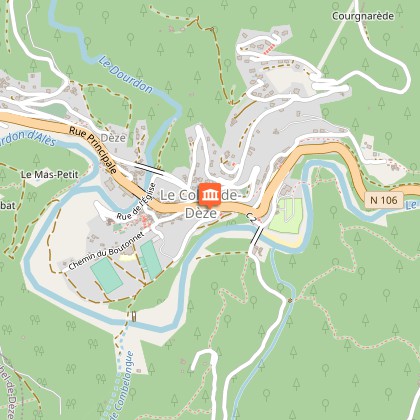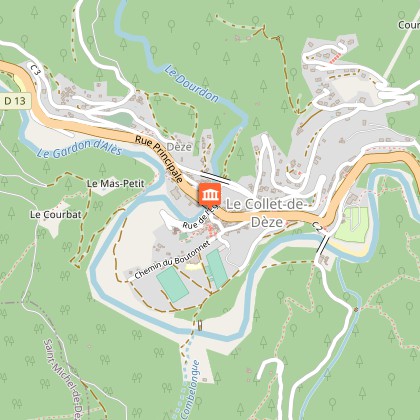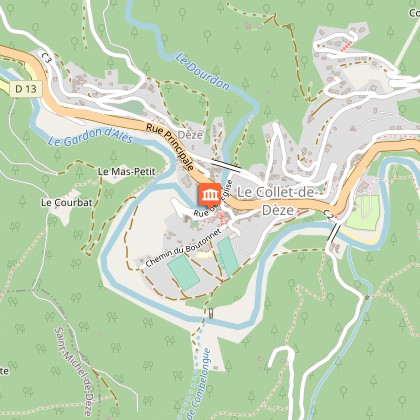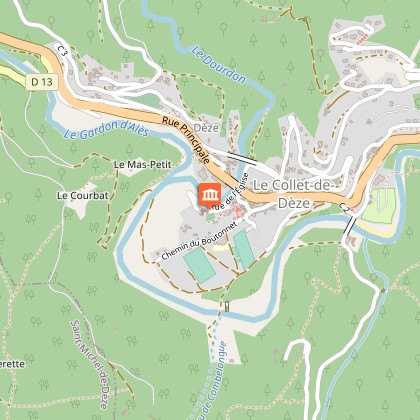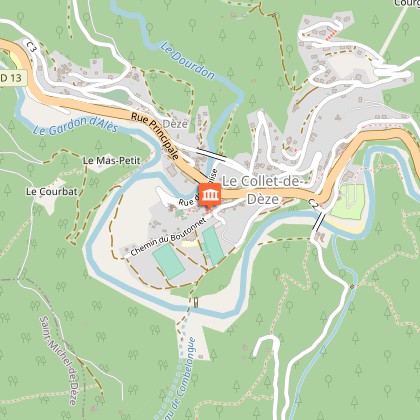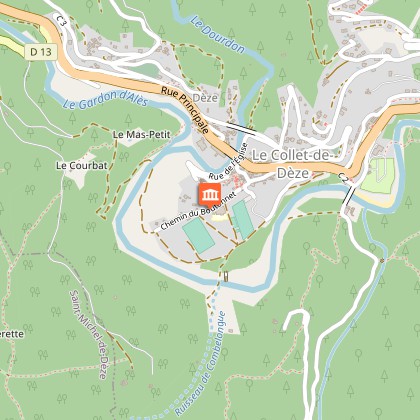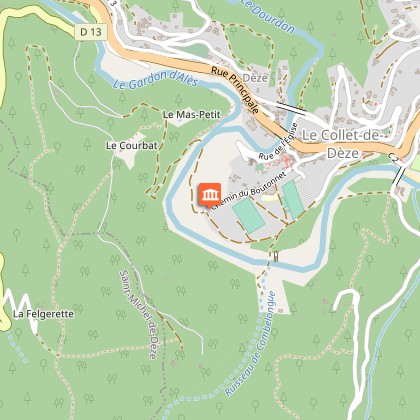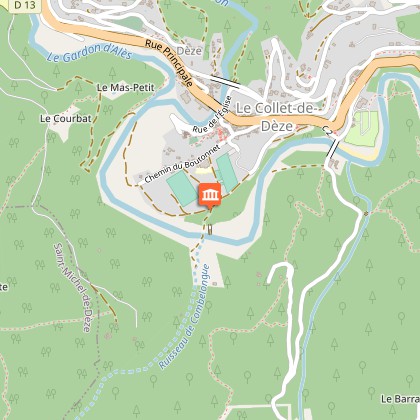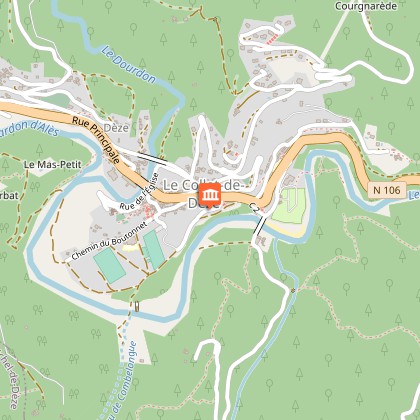Alert
Alerts
Old Collet walk


IGN cards










Description
The walk takes you to the centre of the old village using the former Royal road, which was once the only track from Chamborigaud to Saint German-de-Calberte.
This walk has eleven numbered information panels.
Technical Information
Altimetric profile
Starting point
Points of interest
Additional information
Departure
Opposite the tourist office
Arrival
Car park
Ambiance
This is a walk through the historical heart of Le Collet-de-Dèze with its old Cevenol houses, to the temple (Protestant church) built in 1646 and the top of the Puech de la Sabaterie hill. The village of Le Collet-de-Dèze is located on a strategic communication route linking the Cévennes with the coast. It has been shaped throughout its existence by floods, so-called Cevenol episodes, and also bears witness to the history and memory of the Camisard War.
Access
Le Collet-de-Dèze, on the N 106 between Florac and Alès
Advised parking
Parking du kiosque
Public transport
Ligne 9, arrêt le Collet-de-Dèze
Advice
Ce sentier comporte onze panneaux numérotés.
Data author

